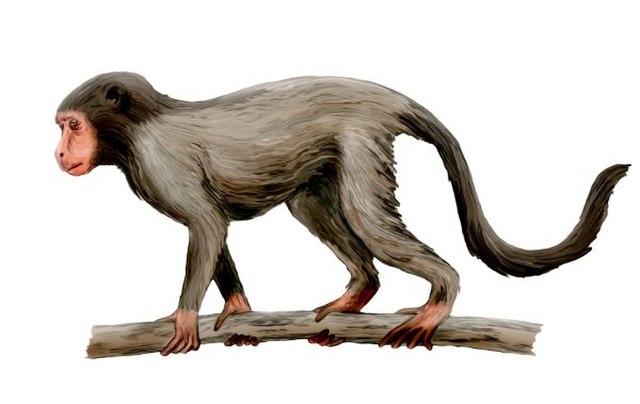Aegyptopithecus is an early fossil catarrhine that predates the divergence between hominoids (apes) and cercopithecids. It is known from a single species, Aegyptopithecus zeuxis, which lived around 38-29.5 million years ago in the early part of the Oligocene epoch. It likely resembled modern-day New World monkeys, and was about the same size as a modern howler monkey, which is about 56 to 92 cm long. Aegyptopithecus fossils have been found in the Jebel Qatrani Formation of modern-day Egypt. Aegyptopithecus is believed to be a stem-catarrhine, a crucial link between Eocene and Miocene fossils.
Aegyptopithecus
Aegyptopithecus skull
The parvorder Catarrhini consists of the Cercopithecoidea and apes (Hominoidea). In 1812, Geoffroy grouped those two groups together and established the name Catarrhini, "Old World monkeys",. Its sister in the infraorder Simiiformes is the parvorder Platyrrhini. There has been some resistance to directly designate apes as monkeys despite the scientific evidence, so "Old World monkey" may be taken to mean the Cercopithecoidea or the Catarrhini. That apes are monkeys was already realized by Georges-Louis Leclerc, Comte de Buffon in the 18th century. Linnaeus placed this group in 1758 together with what we now recognise as the tarsiers and the New World monkeys, in a single genus "Simia". The Catarrhini are all native to Africa and Asia. Members of this parvorder are called catarrhines.
Catarrhini



